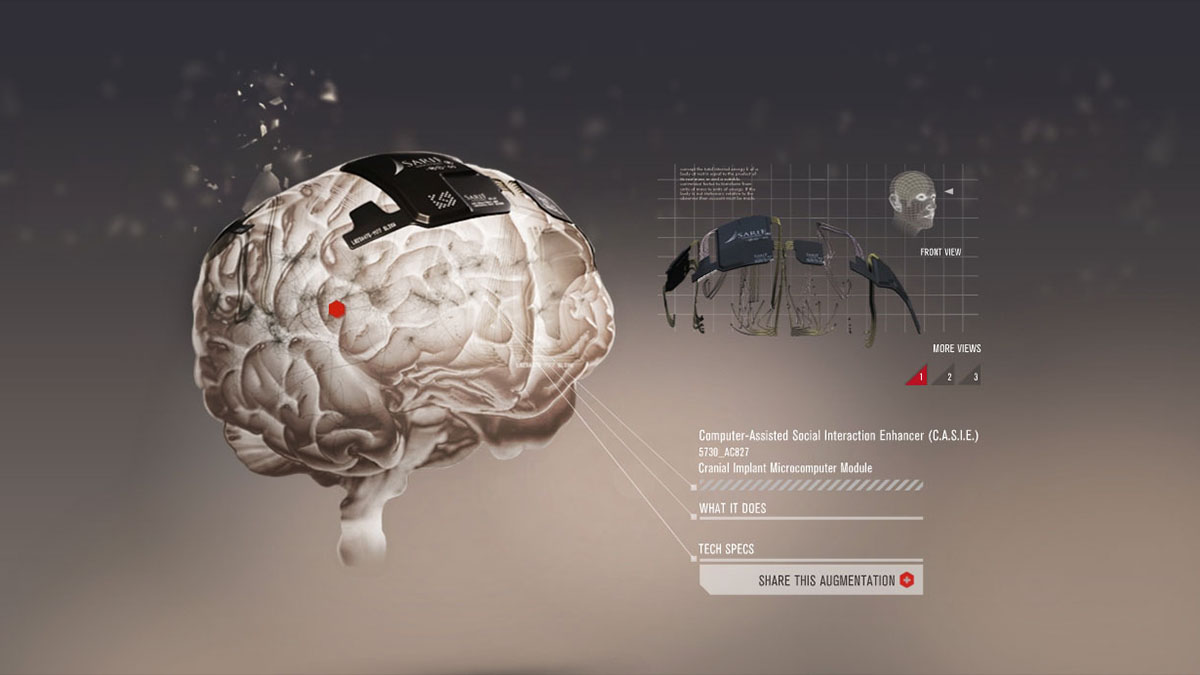moving one inch closer to real world wetware

One of the classic ideas in science fiction is the concept of wetware, a hybrid of biology and electronics which would allow just about any living thing with a brain to hook up to a machine and carry out computing tasks we could never accomplish solely with brains or solely with machinery. As noted last week, quantum computers will exist only to solve complex and obscure computing problems, so if we really want to discover how we think and what makes us intelligent and self-aware, they aren’t going to come even close to cutting it. Effective and well-designed wetware, however, could because it would allow us to work cortex by cortex and neuron by neuron to trace the cascade of thoughts and memories in our minds. But this sort of thing is still in the realm of fiction, right? Maybe not.
At the University of Wisconsin, researchers recently developed silicon-germanium tubes just big enough for neurons’ axons and dendrites to crawl through and attach themselves, and leaving the main cell body, the soma, on the outside. Since this was an experiment in creating a new environment in which to study neurons outside an organism’s body, they have little to say about their future uses other than to mention the potential for prosthetics, but their work may be a stepping stone towards radical technologies.
Here’s the basic concept. According to the researchers, when scientists study neurons, they tend to use a flat surface coated in amino acids which let neurons adhere as they glob together and try to grow. But that’s not a really good way to study individual neurons and how they communicate because in living things, they exist in three-dimensional lattices and networks, and because when they glob together into a neuron ball on a plate, the already faint electrical noise they produce, creates a cacophony that’s very difficult to decipher. This is of course not to say that neurons in your brain talk to each other with no problem since it’s estimated that much of the electrical hum in a brain is just background noise, but it’s even worse in a ball of neuron culture.
Enter the aforementioned silicon-germanium (SiGe) tubes manufactured with diameters of 4 μm to 8.2 μm with the larger diameter used for most of the experiments, and coated with a typical amino acid that attracts neurons, promoting them to stick to their new synthetic habitat. And sure enough, after mice neurons were introduced into the tubes, they quickly began to grow, showing no indication of being affected by any leftover toxicity from the manufacturing process, and exploring the helical structures inside the tubes themselves. Some images even show what look like single axons trying to make their homes within the tubes. Given the data, the team concluded that they’ve successfully created a new type of artificial, non-toxic habitat to study neurons.
And this is where we come to the really big deal and why this research could be a gateway to all sorts of very interesting experiments in the future. Isolating neurons individually in tubes which could be arranged into an elaborate latticework means that we could study how neurons communicate with each other with more ease, since individual neurons’ electrical output can be measured more precisely, and the tubes themselves could be used to get neurons to transmit more carefully artificially-generated signals. Ideally, one could hook up an elaborate prosthetic device wired with these helical SiGe pathways for the neurons to explore and have a fully integrated artificial limb controlled by an outgrowth of the recipient’s nervous system. No more clunky or hard to control robot arms and legs.
We’re already working with ever more elaborate and nimble prosthetics, but it would be a quantum leap for the medical industry if a patient’s nerves could simply grow into a new arm or a new leg and give her full control of the limb along with sensations far more like those of the natural body. And likewise, we could also use neurons in computers or develop tiny probes that could isolate and measure the work of an entire cortex down to the level of an individual neuron we we could get a better idea of how we can talk, walk, and solve complex problems. One of the biggest questions we could try to answer first is whether arranging a neurons in a certain way effectively replicates the function of a cortex or whether there’s more to it than than, and if so, what. From there, we could more accurately model the behavior of a brain.
Of course I should caution that these applications are still many years away and will require decades of very thorough research. However, it would be surprising if DARPA and medical companies didn’t try to jump on to do some experiments of their own and find out how far they could actually get with this method of arranging a neuron culture. The potential here might be huge and to not try to take advantage of it would be rather difficult to justify. Well, unless you’re more worried about money than you are about the results of scientific progress and the need to pursue gateway technologies that could lead to radical future breakthroughs in lucrative and crucial markets and areas of research and development…
Reference: Yu, M., et al. (2011). Semiconductor Nanomembrane Tubes: Three-Dimensional Confinement for Controlled Neurite Outgrowth ACS Nano DOI: 10.1021/nn103618d





